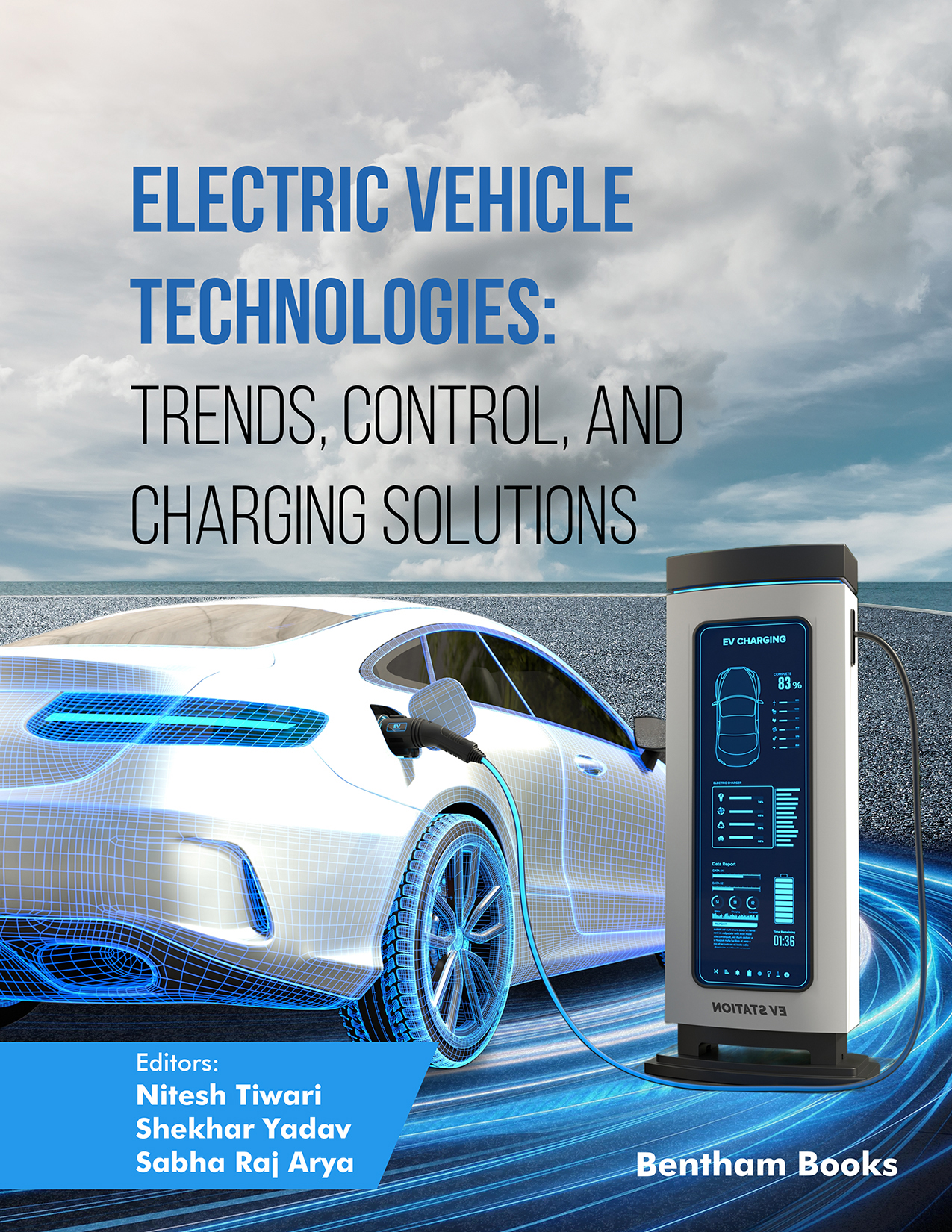The transition to electric vehicles (EVs) represents one of the most significant shifts in modern transportation, driven by the urgent need to reduce carbon emissions and reliance on fossil fuels. As governments and industries across the globe strive to address climate change and promote sustainable mobility, innovative technologies have become essential to the development and success of EVs. This collection of chapters delves into the core areas of research and development that are poised to shape the future of electric vehicles. From solar energy integration to advanced control systems, these chapters provide a comprehensive and forward-thinking perspective on the technologies that will drive the next generation of electric mobility.
Chapter 1, “A Review of Emerging Research Trends and Opportunities in Harnessing Solar Energy for Electric Vehicles,” explores the growing importance of solar energy as a sustainable power source for EVs. This chapter presents an overview of the promising opportunities and challenges involved in integrating solar energy with electric vehicles, an area that continues to receive increasing attention in the research community. As solar technology matures, its potential to support and enhance the energy needs of EVs becomes increasingly significant.
In Chapter 2, “Introduction to EV Motors,” the fundamental components of electric vehicle propulsion are examined. Understanding the operation and control of electric motors is critical to optimizing the performance of EVs. This chapter serves as an essential introduction to the various motor types, including their characteristics, advantages, and applications, providing readers with a solid foundation in EV motor technology.
Chapter 3, “Introduction to Power Electronics Converters,” addresses the crucial role that power electronics play in the efficient operation of EV systems. These converters manage the flow of electrical energy between the battery, motor, and charging system. The chapter discusses the key converter technologies that facilitate the smooth and reliable operation of electric vehicles, and how these systems contribute to their overall performance and energy efficiency.
The discussion progresses with Chapter 4, “Field Oriented Speed Control of BLDC Motor for Practical Drive Cycle,” which focuses on an advanced motor control strategy for electric vehicles. Field Oriented Control (FOC) of BLDC motors is a key method for enhancing performance and efficiency in real-world driving conditions. This chapter explains how this technique optimizes motor operation, allowing EVs to achieve higher levels of efficiency and performance during dynamic driving cycles.
In Chapter 5, “Phase Shifted Full Bridge Converter-based Battery Charger for Fast Charging of Electric Vehicles,” the need for fast and efficient charging solutions is explored. This chapter introduces phase-shifted full bridge converters as a solution for rapid battery charging in EVs. By focusing on the optimization of charging times, this chapter addresses one of the most critical challenges faced by the EV industry—ensuring that electric vehicles are ready for use with minimal downtime.
Chapter 6, “An Adaptive Passivity-based Controller for Battery Charging Application: The Lagrangian Framework,” presents an innovative approach to battery charging using a passivity-based controller. This chapter introduces the Lagrangian framework to optimize the charging process, ensuring that EV batteries are charged efficiently and safely, thereby extending their lifespan and improving overall vehicle performance.
In Chapter 7, “Vehicle-to-Grid (V2G) Battery Charging System for Electric Vehicles,” we look at the bidirectional energy flow that allows electric vehicles to not only draw power from the grid but also return energy. The Vehicle-to-Grid (V2G) concept is a promising development in the integration of EVs with the broader energy grid. This chapter highlights the technical, economic, and regulatory aspects of V2G systems, and how they can support grid stability and energy sustainability.
Chapter 8, “IoT Based Floor Cleaning Electric Vehicle Robot with Live Streaming Camera,” introduces the integration of Internet of Things (IoT) technologies with electric vehicles, specifically in the context of autonomous cleaning robots. This chapter highlights the application of advanced sensors, IoT connectivity, and robotics in the development of intelligent EV systems, extending the use of EV technologies beyond traditional transportation.
In Chapter 9, “Hardware Design and Modelling of Solar-Based Wireless Electric Vehicle Charging Station,” the design and modeling of solar-powered wireless charging stations are explored. This chapter discusses the intersection of solar energy, wireless power transfer, and EV charging, providing insights into how these technologies can be integrated to create efficient, sustainable charging infrastructure for electric vehicles.
Finally, Chapter 10, “Hardware Design of Electric Bicycle with Solar Panel,” closes the collection by addressing the design and development of solar-powered electric bicycles. This chapter emphasizes the growing trend of integrating renewable energy with lightweight personal transportation options, offering a glimpse into the future of urban mobility and clean, accessible transportation.
Prof. S. K. Srivastava
Madan Mohan Malaviya University of Technology
Gorakhpur (UP), India

